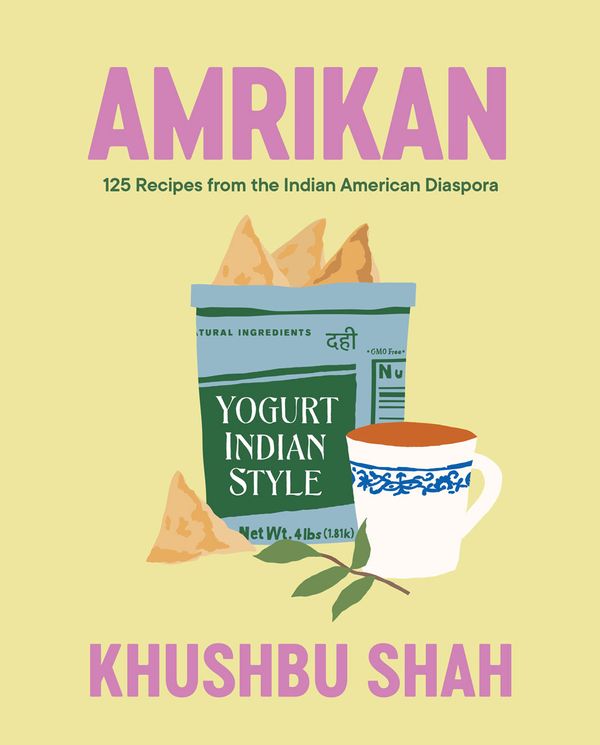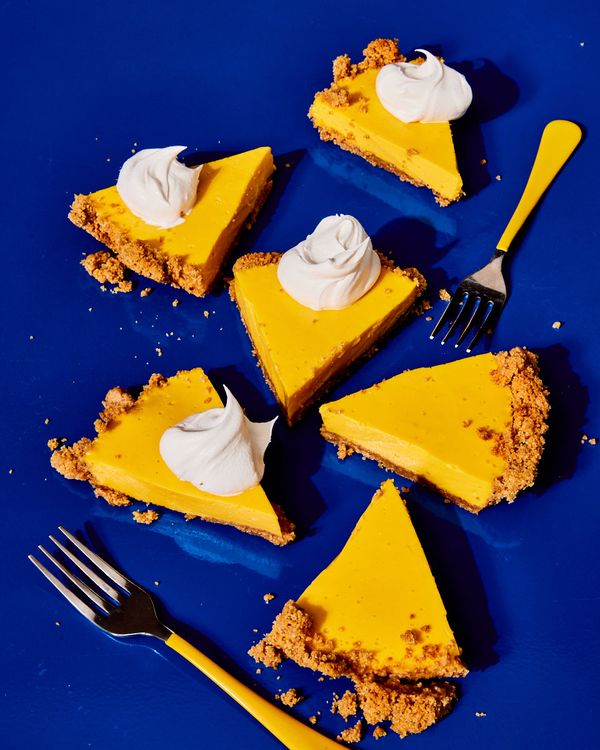
Food writer Khushbu Shah's new cookbook "Amrikan" (pronounced Um-ree-kan) is an inventive, wholly original celebration of the foods and dishes of the Indian-American diaspora.
In the introduction of the book, Shah writes that the "main ingredient in the Indian American culinary lexicon" is adaptation, explaining how "lack of access to staple Indian ingredients" (such as khoya or mawa in the icon dessert gulab jamun) has led to clever adjustments amongst Indian cooks in America, such as Bisquick in the case of the aforementioned gulab jamun.
Shah elaborates, noting how her mother would transform Cream of Wheat into upma, or how she first realized that peanut butter was "an easy swap-in for the specific peanuts needed to make Cilantro-Lime Chutney . . . one of my favorite condiments of all time due to its versatility."
She notes, on the other hand, that "adaptation isn't a one-directional relationship where only Indian dishes are tweaked to accommodate American ingredients," discussing how many "Indians in America have also tweaked American foods with Indian flavors and spices to make them more palatable."
"These are the recipes that immigrant have doubled down on — the dishes that keep them connected to home and keep them whole," Shah continues. And I think that that really sums up the entire ethos of the book. Shah also speaks about immigration patterns and the way they shaped Indian food in America, as well as her family's history coming from Ahmedabad to Syracuse and Detroit.
Unfortunately, Shah also notes how "while Chinese food has become a staple of mall food courts, Japanese food is sold in run-of-the mill supermarkets across the country, and Mexican dishes like burritos and tacos have become as American as chicken nuggets and grilled cheese sandwiches, Indian food has yet to make it into the American dining lexicon beyond a handful of British curry house staples like butter chicken, samosas, and masala chai." Ideally, though, "Amrikan" can be the start of a shift that'll signal a change going forward.
Also, I can speak to it personally. A few weeks back, I made her Butter Chicken Pizza and the Mango Pie — though I couldn't find mango pulp, so I opted for passionfruit, which is one of my favorite flavors — and let me tell you: They were both superb, and everyone who ate them with me concurred!
Salon Food spoke with Shah further to get more into this conversation, to highlight key ingredients and dishes, to espouse the virtues of the oft-maligned freezer and to shout out Ina Garten and Giada DiLaurentiis for their contributions.

I've been such a fan of your work with "Food & Wine" and elsewhere over the years, so I was so excited to hear that you had written a cookbook — and it is terrific! I'm obsessed with the pizzas.
Something that was really important to me to cover in this book were dishes born out of the diaspora itself, and Indian pizza really represents that. I wanted to showcase a combination of toppings that I had seen around the country or ones that I wish existed. Indian pizza in restaurants right now, unfortunately, can be hit and miss when it comes to the balance of flavors and toppings and it was important to me to nail that.
In one of your Instagram posts, you wrote “I will teach you how [to] make Indian food with peanut butter and bisquick and cereal and convince you that pickled jalapeños and Indian food go hand in hand! I will show you why you need Indian pizza! Most importantly, I will show you that Indian food is not hard to make! Just delicious as hell.” How do you see those disparate elements coming together in "Amrikan" and how does that represent your overall cooking ethos?
I really don't believe in a prescriptive approach to cooking — I think ultimately every recipe is very adaptable to what you have on hand and what your preferences are and both of those things are very valuable even if they differentiate from the author's recipe. This book, at its core, is about adaptation and that adaptation doesn't mean it is not "authentic," or "true" Indian food. Adaptation doesn't just apply to ingredients either, but also to cooking methods. We have so many tools and tricks available at our fingertips these days that make cooking faster or easier — there is no shame in utilizing them.
Talk to me a bit about the title? I think it's such a fun "in joke."
It always elicits immediate laughs from anyone who is South Asian — Amrikan is how South Asians say American and it very much represents the approach of the book. Unfortunately, Amazon's SEO doesn't love it and constantly corrects the name to American and shows images of flags.
Please tell me all about how you put together that saag paneer lasagna? It sounds incredible.
I have a lot of strong opinions on lasagna — I don't love globs of ricotta, watery vegetables, or too much cheese. I do like lots of thin, tight layers, and bechamel! So I was toying around with my dream spinach lasagna recipe and the idea hit me to make one with saag paneer. I spent a few days scouring every corner of the internet to see if someone had made one yet and I couldn't find one! So I created my own version with bechamel, shredded paneer, and good lasagna noodles!
Tell me a bit about your "come up" in the food writing and editing world?
A lot of hustle, a lot of pitching and a lot of self belief.
It’s so exciting to go from reading your work in various outlets — from seeing you in "Best American Food Writing" and your Substack, to now cooking from your debut cookbook. How rewarding does the cookbook feel?
It's really wild to be able to say that I've written a book! I feel very lucky to have done so, and to have written a book that I am really proud of and really captures what I wanted to capture. I hope other people are able to see themselves in the pages of the book, too.

There's something about the mango pie that sounds and looks irresistible to me. The color, the simplicity, what I imagine it tastes like — would you say it’s the standout dessert of the book?
I love the mango pie! Especially when you add cardamom to the crust. It really is so representative of the "auntie hacks" that appear throughout the book and it comes together quickly. I am also deeply partial to the candied fennel and jaggery rice krispie treats, which is a recipe I wish existed in the world, but didn't, so I made it happen.
Deb Perelman (of "Smitten Kitchen") wrote that she would "Julie-Julia" the entirety of "Amrikan" — why do you think that is? Feel free to toot your own horn loudly, please.
[Laughs] That was very very kind of Deb to say. But I would love it if people did really cook their way through the book — it does offer real insight into the diversity of Indian food in America today.
Do you have a favorite recipe in the book?
Hard to pick favorites, but besides the lasagna and the rice krispie treats, I really really love the biryani baked in a pumpkin, the chili cheese toast, and the vagharelo bhaath.
What stands out for you as a formative moment that got you into cooking or food at large?
The height of Food Network! I'd watch Ina and Giada every day after school and then go do my homework.

What was the development process of the book like?
I would develop recipes in sprints (I was traveling so much in my previous job that I didn't always have access to a kitchen). So I would dream up what I thought a recipe would be, write it down and then cook it and tweak what didn't work.
For a particularly picky eater, or someone unfamiliar with Indian flavors, what would you say is a good “gateway” recipe in the book?
The chili cheese toast is really fun and easy and mostly ingredients people know and love (bread! cheese! bell peppers!), but the malai broccoli or the mac and cheese might also be great introductions!
How do you practice sustainability in your cooking?
Everything in my book has a freezer note to go with it. I think the freezer is one of the most underutilized tools we have! I love cooking in batches and freezing leftover portions. Last for months, does not go bad, allows you to avoid food waste! I also don't eat a ton of meat and tend to cook mostly vegetarian.
Do you have a favorite cooking (or eating!) memory?
Eating Indo-Chinese food from a street stall in India with my cousin as a teenager on the side of the dusty road. Something about the environment and knowing that I probably shouldn't be eating it made it even better? I had never had anything like it before. The noodles were so fresh and fiery and ripped through my sinuses in the best way possible.
What is the piece of writing that you're proudest of?
Is it lame to say this book? [Laughs]
What’s your biggest tip for cutting down on food waste?
Sorry to sound like a broken record, but use your freezer! Even if you can't use up an ingredient — it can generally be frozen and thawed and used later (bits of tomato paste, diced onion, rice!)







